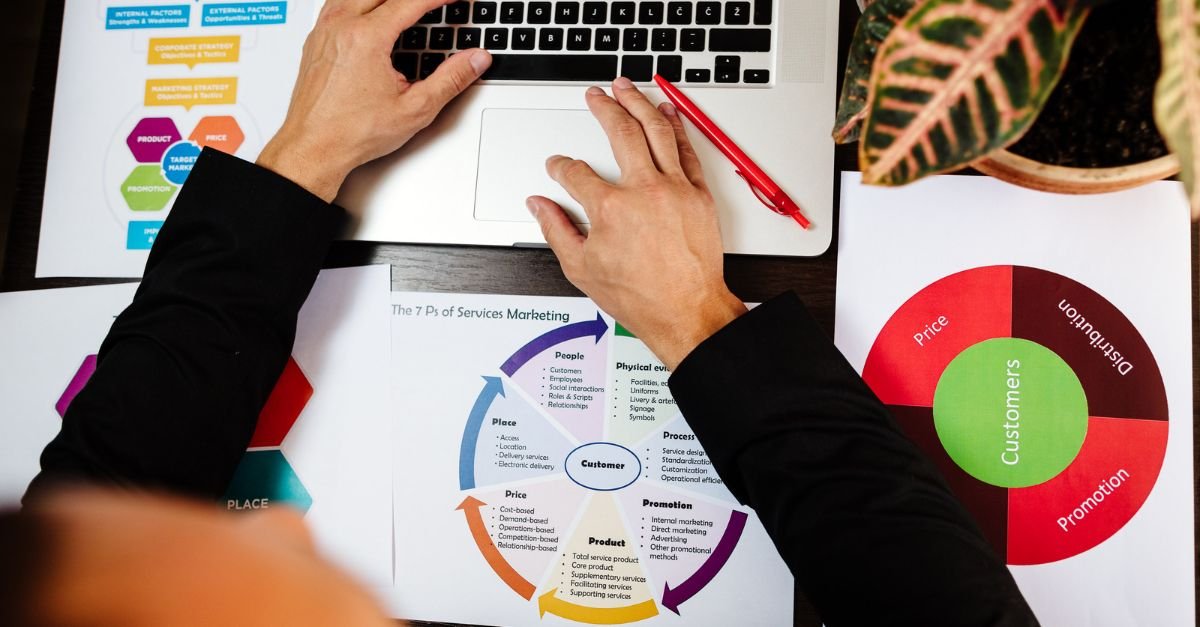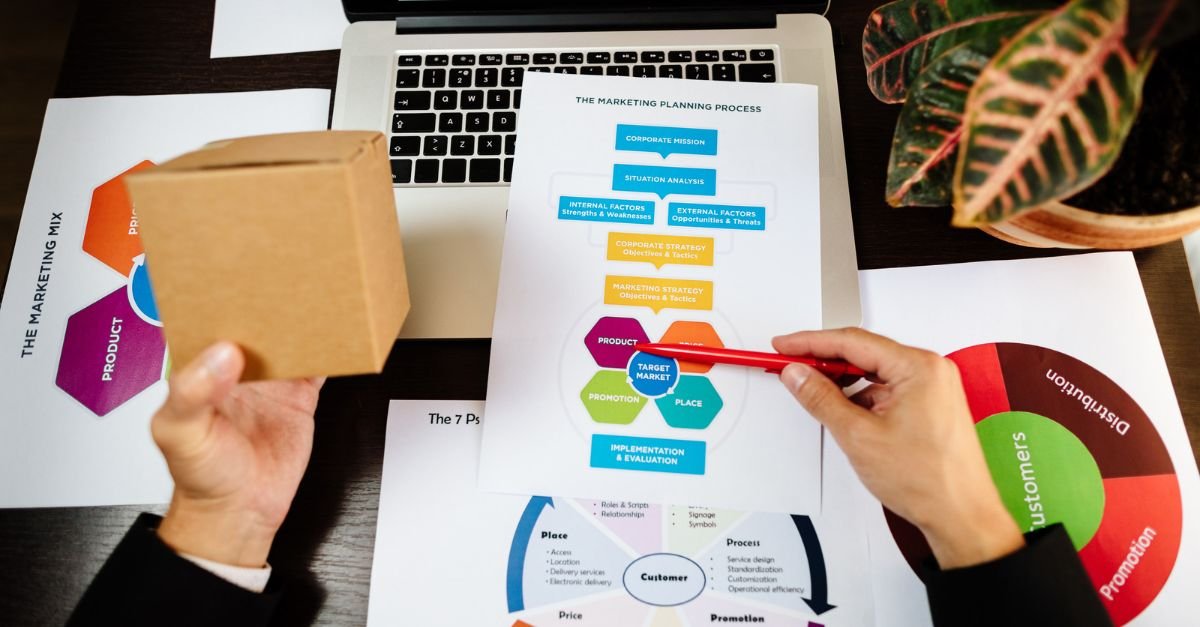In today's complex business environment, the traditional 4ps of the marketing mix (product, price, promotion, and place) are no longer enough to ensure success. To create and maintain a competitive advantage, businesses must also consider the three additional ps of the extended marketing mix: people, process, and physical evidence.

The 7ps of the extended marketing mix are a powerful tool for creating and sustaining a competitive advantage. By taking into account the needs of all stakeholders, businesses can develop a comprehensive marketing strategy that will allow them to successfully navigate the ever-changing business landscape.
The History of the Marketing Mix
The 4 Ps of marketing mix (product, price, place, promotion) was first proposed in 1960 by E. Jerome McCarthy within a managerial approach that covered analysis, consumer behavior, market research, market segmentation, and planning. Phillip Kotler popularized this approach and helped spread the 4 Ps model. McCarthy's 4 Ps have been widely adopted by both marketing academics and practitioners.
Over time, marketers began to formalize their approach to decision-making, and the 4Ps became the foundation of the marketing mix. While the 4Ps are still widely used today, they have come under criticism in recent years for being too simplistic and failing to account for the complexities of modern marketing.
The Extended Marketing Mix
People, process, and physical evidence were added to the marketing mix in the services marketing literature in the 1980s. The marketing mix is a framework that is used to guide marketers in their efforts to produce desired results.
The 7Ps framework is widely used in the services marketing literature and has been found to be a useful tool for marketing managers. The 7Ps are important in the marketing of services because they help to define the service offering and how it should be delivered. They also provide a framework for marketing mix decision-making.
The 7Ps of the marketing mix are important because they help marketers to think about the service offering in a holistic way. They also provide a framework for making marketing strategy decisions.
What are the 7Ps of the marketing mix?

Product
Without a product, there is nothing to market. Therefore, product is arguably the most important aspect of the marketing mix. The product must be able to meet the needs and wants of the target market, otherwise there is no point in marketing it.
The product must also be able to compete against other products in the market, which is where product positioning comes in. If the product is not positioned correctly, it will not be successful. Therefore, it is essential that the product is given the correct amount of attention in the marketing mix.
Product marketing
Product marketing is a specialism within the marketing industry. It is the process of planning, creating, positioning and managing products in order to maximise sales and profits.
Product marketing is about much more than just selling products. It is about understanding customer needs and desires and then creating products that meet those needs. It is also about ensuring that the product is positioned correctly in the market, and then creating and executing a marketing plan that will drive sales.
The role of product marketing is to understand the customer and the market, and then to develop and execute a plan that will make the product successful. This means that product marketing must be involved in all aspects of the marketing mix, from product development through to pricing, promotion and distribution.
Product marketing is a critical role in any organisation that sells products. Without product marketing, companies would struggle to bring new products to market and would be less able to compete effectively.
Price
A company's pricing strategy is one of the most important elements of its marketing mix. Pricing affects a company's profitability and competitiveness, and it is a key driver of customer demand. The right price can attract new customers and grow sales, while the wrong price can deter potential customers and limit growth.
Pricing also needs to be aligned with a company's overall business strategy. For example, a company that wants to be the low-cost leader in its industry will have a different pricing strategy than a company that wants to be known for premium quality.
Pricing strategy is determined by a number of factors, including the company's cost structure, the market environment, and the company's objectives. The most important factor in pricing strategy is understanding customer demand and what price customers are willing to pay for the product or service.
Companies must carefully consider all of these factors when developing a pricing strategy. The wrong price can have a negative impact on a company's business, so it is important to get it right.
Place
In recent years, there has been an increased focus on the role of place in the marketing mix. This is driven by a number of factors, including the growth of e-commerce and the rise of omnichannel retailing.
In the past, place was often seen as a secondary consideration in the marketing mix. However, it is now clear that place is a critical element in the mix and needs to be given due consideration.
There are a number of factors to consider when it comes to place. These include the type of channel (online or offline), the location of the customer, and the type of product or service.
The role of Place in marketing
The right mix of these factors will vary depending on the business and the target market. However, there are some general principles that can be applied.
The first is that businesses need to have a clear understanding of their target market. This includes understanding their needs and wants, as well as their purchasing habits.
Second, businesses need to ensure that they have a presence in the right channels. This means being present where the target market is present, whether that is online or offline.
Third, businesses need to carefully consider their location. This includes both their physical location and their virtual location. The former is important for brick-and-mortar businesses, while the latter is important for online businesses.
Finally, businesses need to think about the type of product or service they offer as distribution and delivery of the product or service will be affected by place.
By taking into account all of these factors, businesses can ensure that they are making the most of the place element in the marketing mix.
Promotion
Promotion is the element that helps create awareness and interest in a product or service and persuades customers to buy it. With no promotion, customers would be unaware of the product or service, and there would be no sales.
Promotion is therefore an essential element of the marketing mix and needs to be carefully planned and budgeted for. It should be seen as an investment, rather than a cost, and should be used to achieve specific objectives such as increasing sales, market share, brand awareness or customer loyalty.
There are a number of different promotional tools available, including advertising, public relations, events, sponsorship, product placement, direct marketing, digital marketing and sales promotion. The most effective promotional mix will vary depending on the product, the target market and the objectives.
Careful planning and execution of a promotional campaign can make a big difference to a company’s bottom line. Get it right, and promotion can be a powerful weapon in the marketing arsenal.
Managing the Promotion aspect of the marketing mix
There are a few key things to keep in mind when managing the promotion in the marketing mix:
1. Set clear objectives
Before starting any promotional activity, it is important to set clear objectives. What is the goal of the promotion? Is it to increase awareness, generate leads, or drive sales?
2. Define the target audience
Who is the promotion targeting? It is important to be as specific as possible when defining the target audience, as this will determine the type of promotion that is most effective.
3. Select the right channels
There are a variety of promotional channels available, and the right channel will vary depending on the target audience. Some popular promotional channels include television, radio, print, online, and events.
4. Create a budget
Promotions can be expensive, so it is important to create a budget and stick to it. Make sure to consider all of the costs associated with the promotion, such as production, creative, and media.
5. Measure results
It is important to measure the results of the promotion in order to determine its effectiveness. Some things to consider measuring include reach, engagement, and conversion.
People
It's often said that people buy from people, but what does that really mean? In today's competitive business environment, it's not enough to just have a great product or service - you need to have a great team to deliver it.
People are the key ingredient in the extended marketing mix, and they can make or break your business. From your sales team to your customer service reps, the people you hire play a vital role in determining your success.
That's why it's so important to get the right people on board, and to train and manage them effectively. Here are some things to consider when it comes to your people:
Recruitment: Attracting the right people to your business is essential. Make sure you're clear on the skills and attributes you're looking for, and take the time to find the best fit for your team.
Training: Once you've found the right people, it's important to train them properly. This means giving them the skills and knowledge they need to do their jobs well, and providing ongoing support.
Uniforms: First impressions count, and the way your team looks can have a big impact on how customers perceive your business. If you require uniforms, make sure they're well-designed and well-made, and that they fit your team members properly.
Scripting: Many businesses rely on scripting to help their team members deliver consistent, high-quality service. If you're using scripts, make sure they're well-written and easy to follow.
Queuing systems: Queuing systems can help to manage customer flow and reduce waiting times. If you're using a queueing system, make sure it's easy to use and understand, and that it helps to keep customers moving through your store or office efficiently.
Complaint handling: No business is perfect, and complaints will happen from time to time. It's important to have a system in place for dealing with complaints quickly and efficiently.
Service failures: Sometimes, despite your best efforts, things will go wrong. When service failures occur, it's important to take responsibility and make things right for the customer.
Managing social interactions: In today's social media-driven world, it's important to manage your team's social interactions with customers. This means monitoring what's being said about your business online, and responding quickly to any negative comments.
People are a vital part of the extended marketing mix, and they can make or break your business. By taking the time to attract, train, and manage your team effectively, you can ensure that your business is set up for success.
Process
Process is the unsung hero of successful marketing efforts. Good processes can be the difference between 5 star versus 3 star customer satisfaction.
While product and price tend to get all the attention, it's actually process that is the key to success in today's competitive marketplace. Just think about all the steps involved in getting a product or service to market. Each one of those steps is an opportunity for something to go wrong.
That's why a well-designed process is so important. It helps to ensure that all the steps in the marketing mix are carried out in the most efficient and effective way possible.
Blueprinting (i.e. flowcharting) service processes is a vital part of process design. It helps to identify potential bottlenecks and issues before they become a problem. Standardization vs customization decisions are also crucial. The wrong decision can lead to inefficiencies and customer dissatisfaction.
Diagnosing fail-points, critical incidents and system failures is another important part of process design.Monitoring and tracking service performance is also essential. This data can be used to improve processes and make them even more effective.
The analysis of resource requirements and allocation is also an important aspect of process design. This ensures that all the resources needed for a process are available when they are needed.
Key performance indicators (KPIs) are an essential tool for measuring process performance. They help to identify areas where improvements can be made.
Best Practices are another important element of process design. By following best practices, companies can be sure that their processes are as efficient and effective as possible.
Operations manuals are another important part of process design. They help to ensure that all the steps in a process are carried out correctly.
All of these elements come together to form a well-designed process. By paying attention to process, companies
can improve their chances of success in today's competitive marketplace.
Physical Evidence
Being able to touch and feel a product is an experience that online retailers cannot provide. This is the advantage that physical evidence has in the marketing mix. Consumers can assess quality and feel reassured that they are getting what they pay for when they can see and touch a product.

When it comes to designing a space, the layout, signage, and interior design are critical to creating a pleasurable and inviting experience for customers. Consider how your store or office is laid out. Is it easy to find your way around? Are the products clearly displayed and labelled? Is the furniture comfortable and inviting? These are all important factors to consider when designing a space.
The ambient conditions in a space are also important. Is it too noisy? Is the temperature comfortable? Are the bathrooms clean and well-stocked? These factors may seem small, but they can make a big difference in the overall experience of a customer.
Finally, artifacts such as stationery, brochures, and menus are important in creating a brand identity. Are they consistent? Do they convey the message you want to send? These factors, along with others, can make a big difference in the overall impression customers have of your business.
By considering all of these factors, you can create a physical space that is inviting, comfortable, and reflects your brand identity. This will give you a leg up on the competition and help you win in the extended marketing mix.
Conclusion
The most important thing to remember when using the 7ps of the marketing mix is that they are all interconnected and must be used in tandem in order to be most effective.
Marketing mix strategies should be tailored to the specific product or service being offered and the target market that is being targeted. By taking the time to properly assess the situation and craft a well-thought-out marketing mix, businesses can ensure that they are making the most of their marketing efforts.

Comments